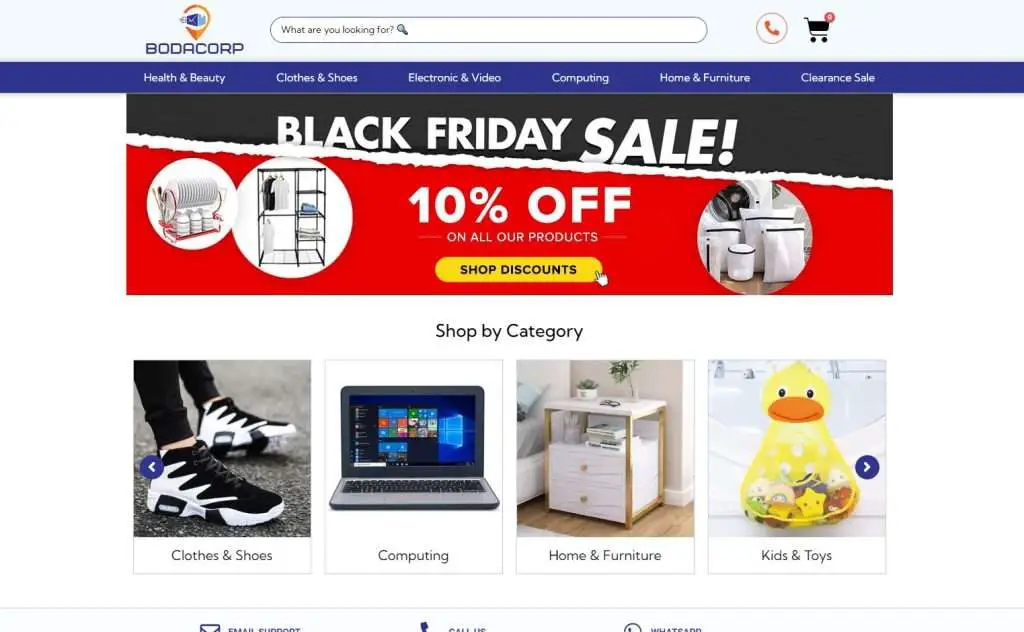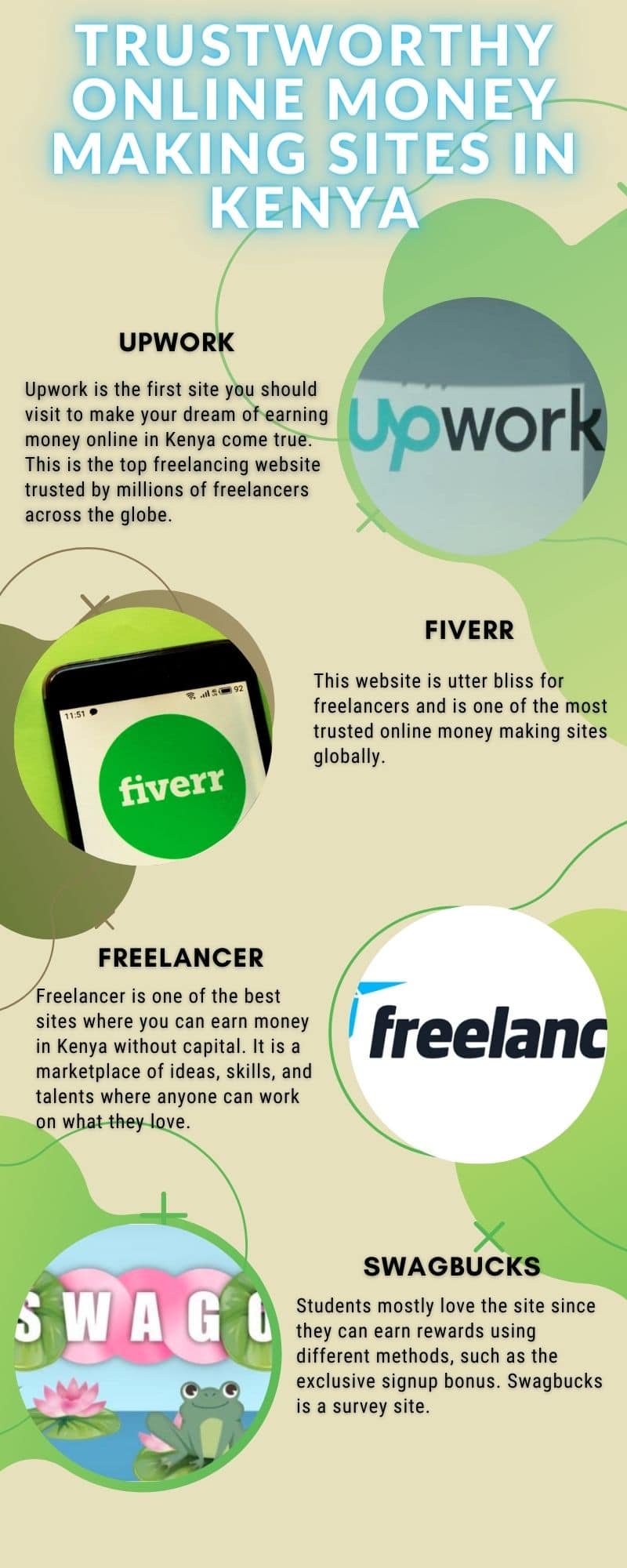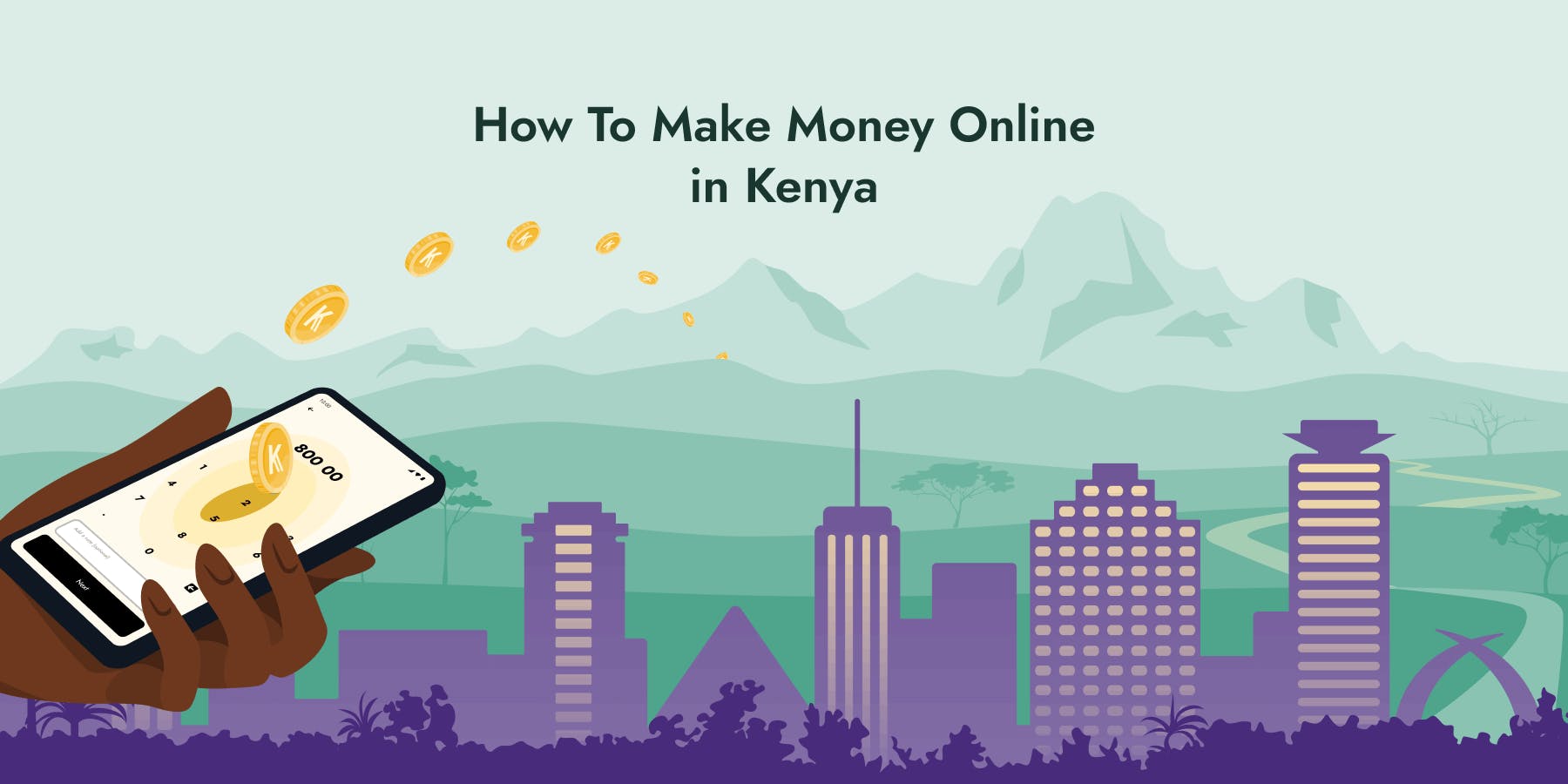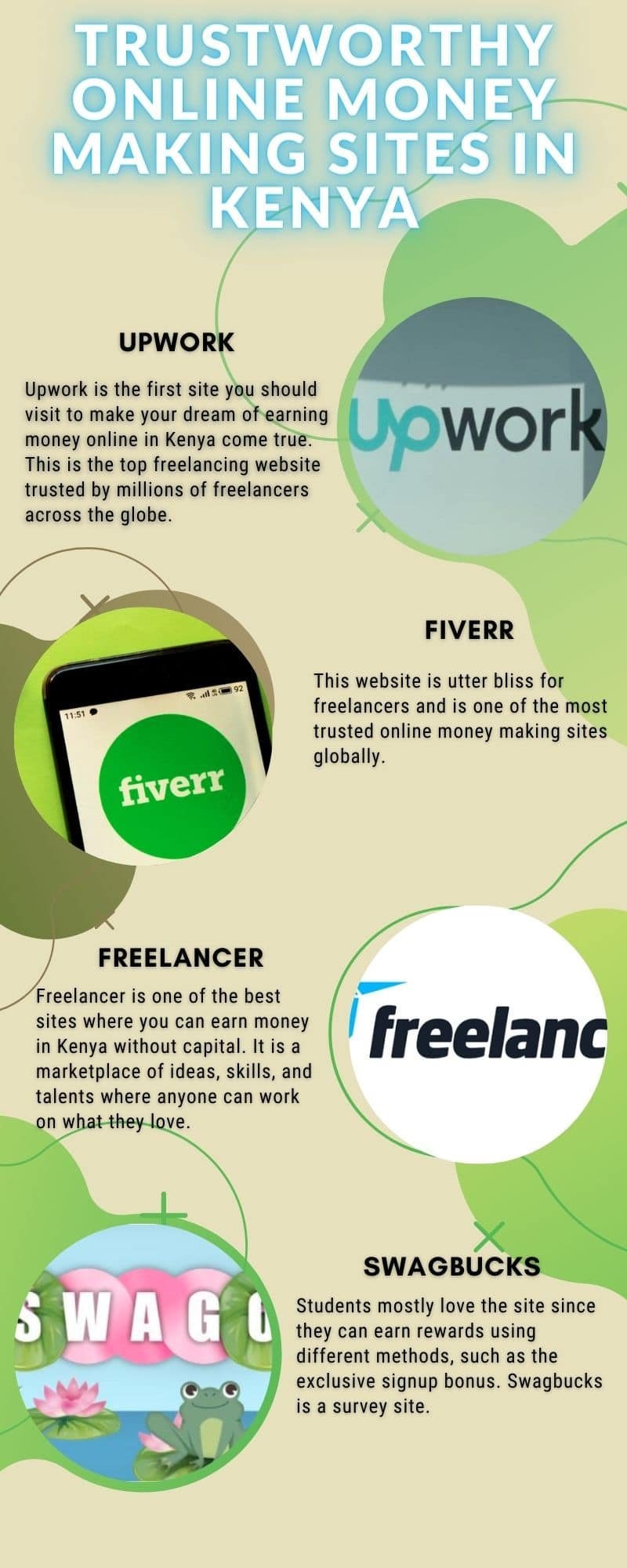Looking for effective ways to monetize your online presence in Kenya? Sponsored content might just be the answer. In this article, we will explore the most efficient strategies to leverage sponsored content and turn it into a lucrative source of income. Whether you’re a blogger, influencer, or content creator, these tips and tricks will help you maximize your earnings online. So, let’s dive in and unlock the potential of sponsored content in Kenya!

This image is property of creativekigen.com.
Choosing the Right Platform for Sponsored Content
Assessing the Reach and Target Audience of Different Platforms
When it comes to sponsored content, choosing the right platform is crucial in reaching your target audience effectively. Start by assessing the reach and demographics of various platforms. Consider their user base, engagement levels, and the type of content they typically consume. For example, if you are targeting a younger audience, platforms like Instagram and TikTok might be more suitable. On the other hand, if your target audience is professionals, LinkedIn or industry-specific blogs may be more appropriate.
Evaluating the Engagement and Interaction Levels on Various Platforms
Engagement and interaction are key indicators of how well your sponsored content will perform. Look for platforms that have high levels of user engagement, such as platforms where users like, comment, and share content frequently. Additionally, consider the level of interaction that users have with brands and influencers on these platforms. Platforms that allow for direct messaging or provide opportunities for users to participate in polls or contests can enhance the effectiveness of your sponsored content.
Considering the Cost and Return on Investment on Different Platforms
While some platforms may have a large reach and high engagement, they may also come with a higher cost. It’s important to consider the return on investment (ROI) when selecting a platform for sponsored content. Assess the cost per engagement or cost per click to determine the value for money. Additionally, keep in mind the potential long-term benefits of reaching your target audience and building brand awareness. A higher initial investment may be worthwhile if it leads to a stronger brand presence in the long run.
Creating Compelling and Relevant Content
Understanding the Needs and Interests of the Target Audience
To create compelling sponsored content, it is essential to have a thorough understanding of your target audience. Research their needs, interests, and pain points. By knowing what resonates with your audience, you can tailor your content to meet their expectations. Analyze their online behavior, engage with them on social media, and seek their feedback to gain insights into their preferences. This understanding will help you create content that is relevant, relatable, and valuable to your target audience.
Crafting Engaging and Informative Sponsored Articles
Crafting engaging and informative sponsored articles requires a balance between brand messaging and providing value to the audience. Focus on creating content that educates, entertains, or solves a problem for your readers. Incorporate storytelling techniques, use relatable examples, and aim to evoke emotions. Also, consider breaking your content into digestible sections with subheadings and bullet points to enhance readability. By delivering high-quality content, you not only capture the reader’s attention but also build trust with your audience and the sponsoring brand.
Utilizing Visuals and Multimedia to Enhance Content
Visuals and multimedia can greatly enhance the impact of your sponsored content. Incorporate relevant images, videos, infographics, and interactive elements to make your content visually appealing and engaging. Visuals help convey messages quickly, grab attention, and increase the chances of content being shared. Additionally, consider using branded imagery or incorporating the sponsor’s logo or products in a subtle and organic way. By creatively integrating visuals and multimedia, you can make your sponsored content more memorable and effective.

This image is property of creativekigen.com.
Building Relationships with Brands and Advertisers
Identifying Potential Brands and Advertisers for Collaboration
Building relationships with brands and advertisers is essential in securing sponsored content opportunities. Start by identifying potential partners that align with your target audience and niche. Research brands that have a strong online presence and actively engage with influencers or content creators. Look for brands that share similar values and objectives as your own. Once you have a shortlist, reach out to these brands, expressing your interest in collaborating and demonstrating how your content can benefit their marketing efforts.
Pitching and Negotiating Sponsored Content Opportunities
When pitching sponsored content, focus on highlighting the value you can bring to the brand. Craft a compelling pitch that clearly communicates how your content and platform can help the brand achieve its goals. Make sure to provide detailed information on your audience demographics, engagement levels, and previous success with sponsored campaigns. Additionally, be open to negotiation and discuss reasonable compensation for your work. Collaborate with the brand or advertiser to come up with a mutually beneficial agreement that aligns with both parties’ objectives.
Building Long-term Partnerships for Repeat Collaborations
Building long-term partnerships with brands and advertisers can provide consistent opportunities for sponsored content. Once you have successfully collaborated with a brand, maintain open communication and continually deliver high-quality sponsored content. Showcase the success of your previous collaborations to reinforce your credibility and reliability. This can lead to repeat collaborations and even exclusive partnerships, strengthening your online presence and increasing your earning potential through sponsored content.
Properly Disclosing Sponsored Content
Understanding and Complying with Advertising Guidelines
Properly disclosing sponsored content is crucial for maintaining transparency and adhering to advertising guidelines. Familiarize yourself with the specific regulations and guidelines in your region or platform of choice. Disclosure requirements may include using phrases like “sponsored,” “paid partnership,” or “in collaboration with” to clearly indicate the promotional nature of the content. Being knowledgeable about these guidelines and staying updated on any changes will ensure that your sponsored content remains compliant and builds trust with your audience.
Clearly Indicating Sponsored Content to Maintain Transparency
When creating sponsored content, it is important to clearly indicate to your audience that the content is sponsored. Transparency builds trust and credibility among your readers, ensuring they understand your relationship with the brand or advertiser. Including a disclosure statement at the beginning of your content or using visual cues, such as overlaying the word “sponsored” on images or videos, helps avoid any confusion. By making the sponsorship clear from the start, you maintain transparency and preserve the authenticity of your content.
Ensuring Proper Labeling and Disclosure on Different Platforms
Different platforms may have specific requirements for disclosing sponsored content. For example, some social media platforms have features that allow you to tag or label your posts as sponsored or in partnership with a brand. Familiarize yourself with these features and utilize them appropriately. In cases where there are no built-in labeling options, clearly indicate the sponsorship within the text or visual content. Adhering to the platform’s guidelines ensures that your sponsored content is compliant and easily identifiable for your audience.

This image is property of netstorage-tuko.akamaized.net.
Optimizing SEO for Sponsored Content
Conducting Keyword Research and Optimization for Better Visibility
To maximize the reach and visibility of your sponsored content, optimize it for search engine optimization (SEO). Start by conducting keyword research to identify relevant keywords and phrases that align with your content and target audience. Incorporate these keywords naturally throughout your content, including in the title, headings, and body. By aligning your content with commonly searched terms, you increase the chances of your sponsored content appearing in search engine results, driving organic traffic to your platform.
Crafting SEO-friendly Titles and Meta Descriptions
Titles and meta descriptions play a crucial role in attracting clicks from search engine results. Craft compelling, informative, and concise titles that accurately represent the content. Incorporate relevant keywords naturally to improve your content’s search visibility. Additionally, write concise meta descriptions that provide a brief summary of your content, enticing users to click and read further. By optimizing your titles and meta descriptions, you improve the overall SEO visibility of your sponsored content.
Using Internal and External Links to Improve Search Rankings
Link building is an essential aspect of SEO and can positively impact your sponsored content’s search rankings. Include both internal and external links within your content. Internal links refer to other pages or articles on your website, providing additional information to readers and improving the overall user experience. External links refer to credible and authoritative sources that add value to your content. Incorporating relevant and high-quality links can improve the search engine rankings of your sponsored content and enhance its overall credibility.
Promoting and Amplifying Sponsored Content
Leveraging Social Media Platforms for Content Promotion
Social media platforms provide a powerful avenue for promoting and amplifying your sponsored content. Leverage the platforms where your target audience is most active, whether that’s Facebook, Instagram, Twitter, or others. Create visually captivating posts related to your sponsored content, utilizing eye-catching images, attention-grabbing captions, and relevant hashtags. Engage with your audience by responding to comments and encouraging them to share or tag others. By strategically utilizing social media, you can expand the reach of your sponsored content and generate more visibility.
Utilizing Email Marketing Campaigns to Reach a Wider Audience
Email marketing campaigns are an effective way to reach a wider audience and promote your sponsored content. Build an email list by offering valuable content or incentives in exchange for email addresses. Segment your list based on the interests and preferences of your subscribers. Craft personalized and engaging emails that highlight the benefits of your sponsored content. Include compelling subject lines, clear calls-to-action, and visually appealing designs to encourage recipients to click through and engage with your sponsored content.
Collaborating with Influencers and Bloggers to Amplify Content
Collaborating with influencers and bloggers who have a similar target audience can greatly amplify the reach and impact of your sponsored content. Identify influencers or bloggers whose content aligns with your niche and audience. Reach out to them with a mutually beneficial collaboration proposal that is appealing and relevant to both parties. This could include guest blogging opportunities, influencer takeovers, or joint content creation. By teaming up with influential individuals, you tap into their existing audience and gain exposure to a wider group of potential viewers.

This image is property of images.prismic.io.
Analyzing and Measuring the Impact of Sponsored Content
Utilizing Analytics Tools to Track and Assess Content Performance
Analyzing the impact of your sponsored content requires the use of analytics tools. Implement tools such as Google Analytics, social media insights, or platform-specific analytics to track key metrics. Monitor the performance of your content by analyzing metrics such as views, clicks, shares, conversions, and engagement rates. These insights provide valuable data on how well your sponsored content resonates with your audience, allowing you to refine your strategies and optimize future campaigns.
Monitoring Key Metrics such as Engagement, Conversion, and Reach
Engagement, conversion, and reach are key metrics to monitor when assessing the impact of your sponsored content. Engagement metrics encompass likes, comments, and shares, indicating how well your content resonates with your audience. Conversion metrics, such as click-through rates or sales, demonstrate the effectiveness of your content in driving desired actions. Reach metrics, such as impressions or reach, reflect the number of people exposed to your content. By regularly monitoring these metrics, you can assess the success of your sponsored content and make data-driven decisions to improve future campaigns.
Adjusting Strategies Based on Data-driven Insights
Data-driven insights provide valuable guidance for adjusting and improving your sponsored content strategies. Analyze the data collected from your analytics tools to identify patterns, trends, and areas for improvement. Pay attention to metrics that indicate audience preferences, content performance, and conversion rates. Adjust your content creation, distribution, or targeting strategies based on these insights. Experiment with different formats, platforms, or messaging to optimize your sponsored content for maximum impact and achieve better results.
Staying Up-to-Date with Trends and Industry Changes
Keeping Abreast of the Latest Digital Advertising Trends
In the constantly evolving world of digital advertising, staying informed about the latest trends is essential. Follow industry-related blogs, subscribe to newsletters, and join relevant online communities to stay up-to-date with the latest developments. Attend webinars or conferences specific to digital advertising and sponsored content to gain insights from industry experts. By staying informed, you can adapt your strategies to align with emerging trends, ensuring your sponsored content remains relevant and effective in a rapidly changing landscape.
Adapting to Changes in Social Media Algorithms and Policies
Social media platforms frequently update algorithms and policies that can impact the reach and visibility of your sponsored content. Familiarize yourself with the guidelines and algorithm changes of major platforms. Stay informed about any rule updates related to sponsored content or branded content on these platforms. By adapting to these changes and adjusting your strategies accordingly, you can continue to effectively promote your sponsored content and maintain a strong online presence.
Continuously Learning and Improving Sponsored Content Strategies
Continuous learning and improvement are essential for success in the world of sponsored content. Regularly evaluate the performance of your sponsored content and seek opportunities for improvement. Stay curious and invest in your personal and professional development. Attend workshops, courses, or webinars that focus on content creation, marketing, or digital advertising. Network with other content creators or influencers to exchange best practices and learn from their experiences. By continuously learning and refining your strategies, you can stay ahead of the curve and consistently deliver quality sponsored content.

This image is property of cdn.standardmedia.co.ke.
Balancing Sponsored and Organic Content
Maintaining a Balance between Sponsored and Non-sponsored Content
While sponsored content can be a lucrative source of income, it’s important to maintain a balance with non-sponsored or organic content. Overloading your platform with excessive sponsored content may deter your audience and diminish trust. Aim for a healthy mix of sponsored content and organic posts that provide value to your audience. This ensures that your platform remains authentic and engaging while still allowing you to monetize your content through sponsorships.
Ensuring Sponsored Content Aligns with the Brand’s Values and Audience
When integrating sponsored content into your platform, it is crucial to ensure that it aligns with your brand’s values and audience. Select sponsors or advertisers whose products or services resonate with your audience and align with your niche. By maintaining consistency and authenticity, you can preserve the trust and engagement of your audience. It’s important to only collaborate with brands or advertisers whose values and offerings complement your platform and the needs of your audience.
Managing Expectations for Sponsored Content Integration
Managing expectations is key to a successful sponsored content integration strategy. Clearly communicate to your audience that you collaborate with brands or advertisers to support your content creation efforts. Explain how sponsored content enables you to continue producing valuable content and maintain the quality they expect. Set realistic expectations regarding sponsored content frequency, type, and format. By managing expectations, you minimize potential friction and maintain a positive relationship with your audience.
Overcoming Challenges and Maximizing Opportunities
Addressing the Issue of Ad Blockers and Ad Fatigue
Ad blockers and ad fatigue pose challenges for sponsored content creators. Ad blockers can prevent your sponsored content from reaching your target audience. To overcome this, focus on delivering high-quality content that provides value beyond traditional advertising tactics. Engage your audience through storytelling, creative visuals, or interactive elements that appeal to their interests. Additionally, ad fatigue can occur when audiences are inundated with sponsored content. To combat this, carefully select the brands and campaigns you collaborate with, ensuring they align with your audience’s interests and preferences.
Using Creativity to Stand Out in a Saturated Market
The digital landscape is saturated with sponsored content, making it crucial to stand out from the competition. Utilize your creativity to captivate and engage your audience. Experiment with innovative formats, storytelling techniques, or collaborations with other creators. Think outside the box and offer unique perspectives or insights. By delivering content that is original, innovative, and entertaining, you can differentiate yourself from competitors and attract both brands and audiences to your sponsored content.
Identifying Niche Markets and Targeting Specific Audiences
Identifying niche markets and targeting specific audiences can be a strategic approach to maximizing the impact of your sponsored content. Rather than casting a wide net, focus on specific niches or subcultures that align with your interests and expertise. By understanding the unique needs and preferences of these niche markets, you can create highly targeted sponsored content that resonates deeply with the audience. This targeted approach can result in higher engagement rates, increased audience loyalty, and greater success in monetizing your platform through sponsored content.
In conclusion, effectively utilizing sponsored content to make money online in Kenya requires careful platform selection, compelling content creation, building strong relationships with brands, proper disclosure, SEO optimization, strategic promotion, data-driven analysis, staying updated with industry trends, balancing organic and sponsored content, and overcoming challenges while maximizing opportunities. By following these comprehensive steps and continuously improving your strategies, you can successfully monetize your online presence through sponsored content in Kenya.


